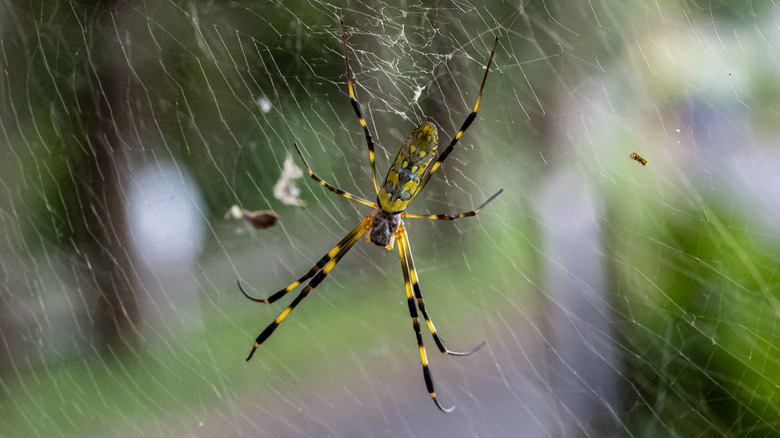What Is A Joro Spider & Why You Might Be Seeing This Giant Creature More Often
The United States in recent years has confronted an unexpected challenge with the invasion of a type of orb weaver: Joro spiders (Trichonephila clavipes), originally native to parts of East Asia. These arachnids, distinguished by their eye-catching appearance and unique behaviors, have become a cause for concern in various regions across the country. The introduction of Joro spiders — which originated from Japan, Korea, China, and Taiwan – to the American landscape raises questions about their potential impact on local ecosystems and human activities.
Trade and travel globalization have facilitated the unintentional transfer of these spiders to the U.S., with some hypothesizing they arrived in the country via shipping containers. While not inherently harmful to humans, the rapid expansion of Joro spiders prompts worries about their potential ecological effects.
Understanding the mechanisms of their migration is crucial for developing effective strategies for control and management. Joro spiders have been on U.S. soil for 10 years or so, establishing a strong presence in the Southern states. However, scientists believe it won't be long before they start moving across the country, with sightings already reported in places like West Virginia, Oklahoma, and Maryland.
Understanding Joro spiders
Having been in the country for approximately a decade, it's no wonder Joro spiders have been reported in more and more states, and their potential for further expansion continues, making places like New Jersey and beyond their new frontier.
Recognizing these areas of infestation is crucial for researchers and the public alike. Identifying features of Joro spiders, such as their vibrant coloration — a combination of the colors blue-green, black, yellow, and red — and large size, aids in distinguishing them from native species. The females, in particular, showcase a conspicuous abdomen adorned with intricate patterns.
These spiders are renowned for constructing large, complex orb-shaped webs, a behavior that plays a crucial role in their ecological impact. Female Joro spiders exhibit a unique ballooning or "parachuting" behavior. To disperse to new locations, particularly during their juvenile stages, these spiders release silk threads that catch the wind, allowing them to float to different areas. This behavior contributes to their ability to colonize new territories and explains their presence in regions far from their native habitat.
In their native ecosystems, Joro spiders play a vital role in controlling insect populations. Their large, intricate webs efficiently capture flying insects, including pests like stink bugs and mosquitoes, contributing to the natural balance of the ecosystem.
What to do when you encounter a Joro spider
In the event of a Joro spider encounter, it is essential for you to remain composed and wait for it to pass, as these spiders pose minimal threats to humans. In fact, they prefer to skulk away rather than risk a confrontation. Besides, their fangs aren't designed to penetrate human skin, and their hunting activities are focused on insect prey.
For those preferring not to share their space with these arachnids, practical steps can be taken. Removing debris and potential nesting sites around your property, such as piles of firewood and leaves, can discourage their presence, as Joro spiders prefer undisturbed areas for web construction.
Educating oneself about these spiders' behaviors can facilitate a peaceful coexistence. Seeking professional pest control assistance is advisable, especially if you believe you have Joro spiders nesting in or near your property. In general, scientists caution everyone to refrain from using harmful pesticides on Joro spiders (and other insects) as doing so may have unintended consequences on local ecosystems.


